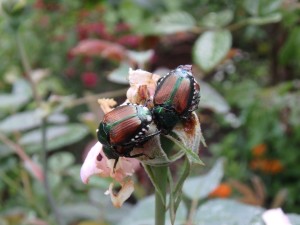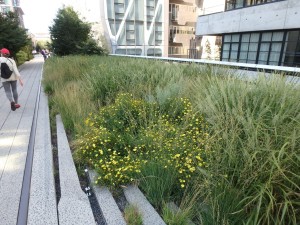On Becoming a Good Gardener
At a neighborhood cookout I met a woman who asserted that she had a “brown thumb.” Although this is not the first time I’ve heard someone say they couldn’t grow anything, I always take issue with such statements. No one is born with an ability to garden; some of us become good gardeners over time as we learn, and as we improve our soil. Good gardeners learn from their mistakes – I’ve killed plenty of plants, but I try not to let that discourage me. Good gardeners observe our gardens carefully, visit other gardens, and read the words of other gardeners.
Ms. Brown Thumb was surprised to learn that I went to my garden every day, generally several times a day. She just visits hers on the weekends. Good gardeners pull a few weeds every day, pick bugs, and marvel at the wonders of their flowers.
She was also bothered by bugs. She didn’t want to be bitten by them, or, I gather, touch them; I imagine handling slugs or snails would be unthinkable for her – though routine for me. Many of my gardening friends think nothing of squishing snails or Japanese beetles between their fingers, though others prefer dropping them in soapy water. Still, bugs are a part of gardening.
Observation is important. If you don’t see what is eating your squash or potato leaves, turn over the leaf. Chances are you’ll find the culprit – or a clue like their eggs. Go out at dawn, or just before bed with a flashlight to see what the problem is. Good gardeners are amateur sleuths, too.
My grandfather, John Lenat (1885-1967) was a great gardener. He always had a compost pile full of earthworms made from weeds, kitchen scraps, and chicken or cow manure. He treated his soil and plants to liberal doses of compost when he planted, and often gave his tomatoes manure tea that he made in an old wooden barrel. We mixed hen manure and water (roughly 4 parts water to one part manure), stirred it daily, and fed his tomatoes one 12oz can of tea at least once a week.
Good gardeners love being outdoors, and don’t mind getting dirty. Remember the character Pig Pen in Charles Schultz’s comic strip, Peanuts? Gardeners are a bit like that. I am forever wiping my hands on my pants so that I can clean my glasses or dig a knife out of my pocket.
I have a network of gardening friends, and we are forever exchanging ideas and plants. Sometimes we even get together to help a friend catch up on weeding – a grand idea if you get behind – or just to have a potluck and talk gardens. I recommend it.
Garden clubs are another great way to learn about gardening. Although the summer is about over, many clubs have garden tours each summer. I love to visit gardens that are not open to the public. There is nothing like seeing how another gardener designs a garden, or the conditions that a particular plant likes.
Public gardens are wonderful resources, too. I just visited the High Line, a garden in New York City that was built on an abandoned elevated railway line. It’s over a mile and a half long and has a fabulous collection of not only of perennials and grasses, but trees and shrubs, too. I brought my camera and a notebook to record the walk, and to help me remember names of plants I want to research.
Books can be a great help when it comes to gardening, too. Even experienced gardeners can be reminded of facts we forget. How many years are bean seeds good for? How about onions? I find myself going back to Ed Smith’s book, “The VegetableGardener’s Bible” (Storey Publishing) to jog my memory. And Barbara Damrosch’s “The Garden Primer” (Workman Publishing) is a great resource on many topics; I assigned it to my students when teaching college-level sustainable gardening. I’ve even been known to refer back to books I’ve written on occasion! We can’t remember everything.
I know that the internet is a great resource, too. As an older gardener I tend to reach for books on my shelf when I have a question, but I’m increasingly using Wikipedia or university sites for information. And I’ve been able to identify wild plants by using Google – I just list three characteristics of a plant, and it presents me with a number of options – including the right one.
The key to having a green thumb, I think, is to get to know soils –and how to improve them. Good compost is full of organic matter and living beneficial organisms. I add it liberally to my soil and have for years. Now plants beg to come home with me so they can thrive and have babies. Of course, the weeds do, too!
Read Henry’s blog posts at https://dailyuv.com/gardeningg




